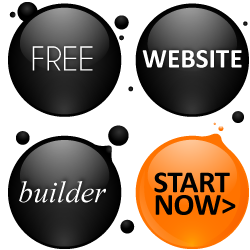Dynamic Content Changes Everything
In a CMS (Content Management System) content is managed by a database and can be accessed via RSS (Really Simple Syndication).
 Keeping things basic, RSS is a file created by your CMS that makes your content broadcast-able. This lets your online content reach out beyond the pages of your website to touch users wherever they access the RSS feed.
Keeping things basic, RSS is a file created by your CMS that makes your content broadcast-able. This lets your online content reach out beyond the pages of your website to touch users wherever they access the RSS feed.
There are a wide variety of RSS Directories that allow users to search for content they are interested in. Users can also subscribe to your specific RSS feed through a feed catcher or by subscribing through a web based feed service that will allow them to track feeds of their own choosing.
RSS also allows for the use of Tags.
Tags identify the topic of the content and are a large part of what makes using RSS so attractive. Entire websites have been developed around scripts that search RSS feeds for common Tags. You can visit a site like Technorati (http://technorati.com/tag/ ) and see which tags are being used most in real time in the form of a Tag Cloud. The larger words and phrases indicate the tags that are being used more often.
Technorati and similar services also allow users to set up RSS enabled search strings that will notify them as soon as content is posted on topics that interest them.
All this means is that there is more to attracting your target market than ranking in search engines. If you use RSS enabled web pages and you make sure that your RSS feeds are submitted to as many RSS directories as possible so that your target market has more ways to find you.
Beyond RSS, a CMS based website or blog (a blog is a CMS) has an interactive element in that users can be allowed to make comments on your content. Any level of privacy can be chosen, from letting anyone post comments, to requiring user registration.
Comments build content for you – and provide you with valuable user feedback, both good and bad.
Plugins and modifications for many CMS systems invite even more interaction. Polls gain information from users. Forums invite the formation of a community. The options are increasing all the while and if you don’t find something that does what you want, you can hire a freelance programmer to create something for you.

-
To Simplify: Web 2.0 Can Be Understood As A User Involved Internet Experience.
-
How Are You Expected To Respond And Incorporate 2.0 Tactics In Your Online Business?
-
Dynamic Content Changes Everything
-
Social Bookmarking
-
Social Networking
-
The Good, the Bad & the Ugly of Business Focused Social Networking for the Internet Marketer
